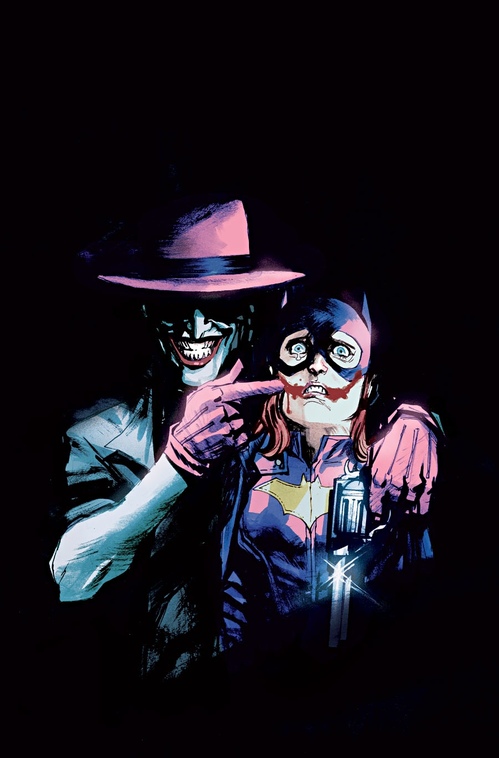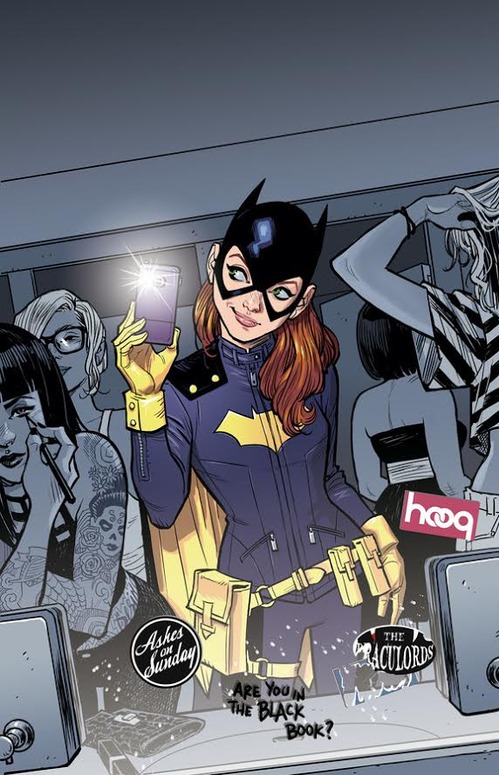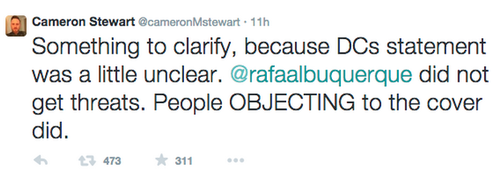Comic book demographics are rapidly changing, as evidenced by a 2014 Facebook poll showing that nearly 43 percent of comic book readers are female. While the industry once catered exclusively to young white males, readers of all genders, sexual orientations and ethnicities are now beginning to embrace the medium. Geek is chic. With the popularity of the DC and Marvel blockbuster films and television shows, comic books have slyly segued into the mainstream.
As a 12-year-old girl who found solace in the diversity and let-your-freak-flag-fly acceptance of the X-Men, I often felt excluded and challenged in the comic book store clubhouse solely because of my gender. Fast forward 15 years and things haven’t changed all that much. The comic book industry has made significant headway to embrace a larger audience of female readers, introducing a female Thor, a black/latino Spider-Man, and gay and lesbian superheroes like Midnighter and Batwoman. DC has recently gone on record to provide role models for all of their fans, no matter their background. So why do young male fans still spew vitriol at anyone different who tries to make a point about this problem in comics?
The variant cover for Batgirl #41 has inspired much debate. There’s no denying that it is a fantastic piece of artwork that evokes a great deal of emotion. Artist Rafael Albuquerque has managed to capture the fear in Barbara Gordon’s face, a single tear leaking out of her right eye as the Joker holds her captive. The problem is that Batgirl is no longer a dark title, but instead aims to provide an uplifting new hero for young female readers. The creative team of Cameron Stewart, Brenden Fletcher and Babs Tarr softly relaunched Batgirl last October with a narrative that reflects the emerging world for young girls, riffing on timely topics like online privacy and identity. With a slick body-covering costume and indomitable spirit, this new Batgirl has marked a swift departure from anything that could be interpreted as grim and humorless sadism.

Albuquerque’s Batgirl #41 variant cover
Albuquerque’s cover references the events of Alan Moore’s 1988 graphic novel Batman: The Killing Joke, in which the Joker shoots Barbara in the spine, strips her naked, and then photographs her helpless body in order to show the photos to her father, police commissioner Jim Gordon. When the story was published, Moore aimed to show the emotional and logical repercussions of a violent fiction, a pragmatic angle uncommon coming out of the early ‘80s’ Silver Age. Even Moore, who has repeatedly come under fire for misogynist themes in his work, said he regrets the level of violence he directed at Barbara. In an interview with Wizard Magazine in 2006, he said:
“I asked DC if they had any problem with me crippling Barbara Gordon—who was Batgirl at the time—and if I remember, I spoke to Len Wein, who was our editor on the project … [He] said, ‘Yeah, okay, cripple the bitch.’ It was probably one of the areas where they should’ve reined me in, but they didn’t.”
Albuquerque realized the inappropriateness of his work and asked DC Comics to remove the alternate cover when fans spoke out against it. These fans were then subjected to threats of violence, perpetuating the very problems that removing the cover sought to eliminate.
It’s not censorship when an artist asks the publisher to remove his cover. There is no censorship argument to be played here—if Albuquerque had felt that his cover wasn’t harmful, he wouldn’t have asked for it to be removed. Yet many fans continue to object to those who support the removal of the cover. Many argue that the Joker has tortured Batman and Robin many times, and that his treatment of Batgirl was no different. Yes, Joker has put Batman and several Robins through hell, but there were no sexual undertones, no hints of rape or sexual violation. Those belong solely to Barbara.
Albeit, villainess and eco-terrorist Talia al Ghul drugged and sexually assaulted Batman, but the circumstances lacked the brutality Batgirl was subjected to. Barb, on the other hand, was depicted crying, bloody and naked on the cold ground while Joker loomed over her. Her superhero days had ended until writers Kim Yale and John Ostrander revived her as a hacker working first for the Suicide Squad and later for Batman. Barbara’s transition from depressed victim to superhacker Oracle was revealed in “Oracle: Year One”, a story arc in 1996’s The Batman Chronicles, and it was not an easy journey for the character.
Young women trying to get into comic books don’t need a reminder of the struggles they face in the real world shoved into their faces. One in six women will deal with a rape or attempted rape in their lifetime, and that’s not counting other forms of sexual assault or violence. We need heroes who stand proud and kick ass, instead of being victimized by villains. We’re sick and tired of being victims.
Instead of feeling threatened, comic book fans of any denomination need to remember what was so special about comics for them – the feeling of inclusiveness, of belonging and empowerment. They need to extend that arm to new fans, to welcome them into the fold. It’s time to let everyone in on the fun.

